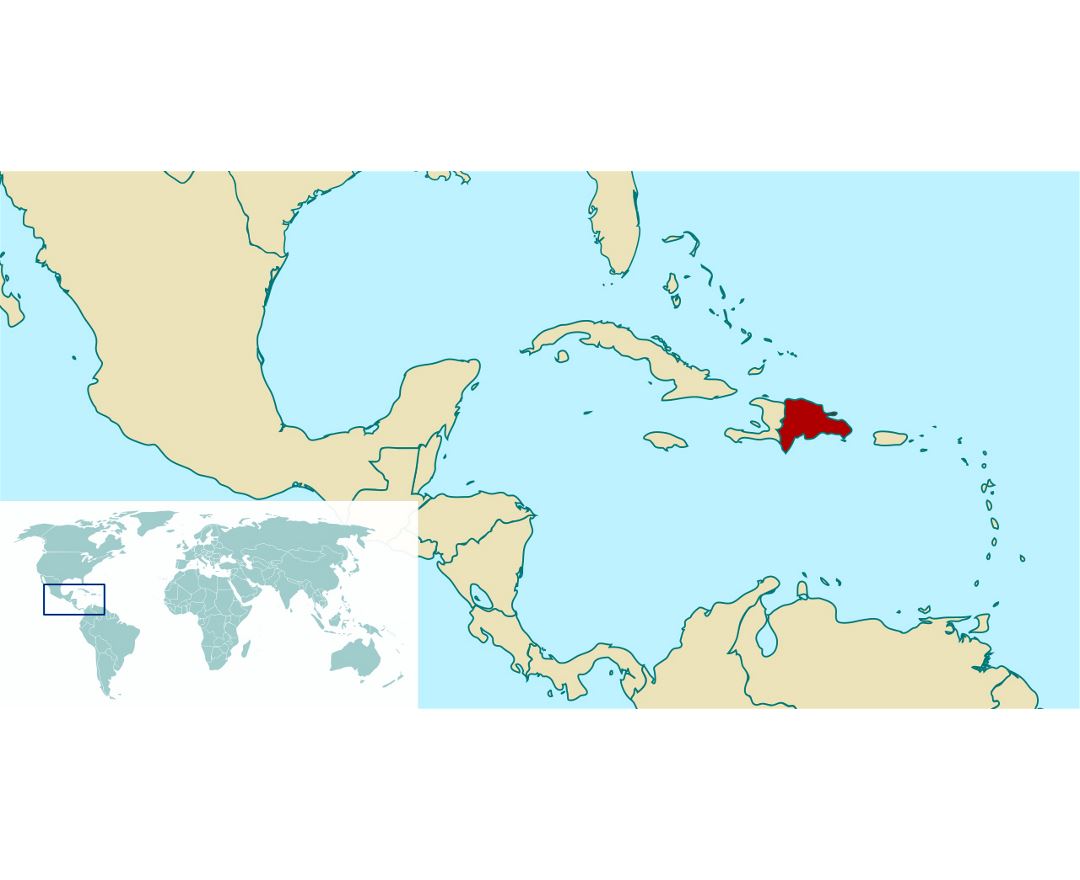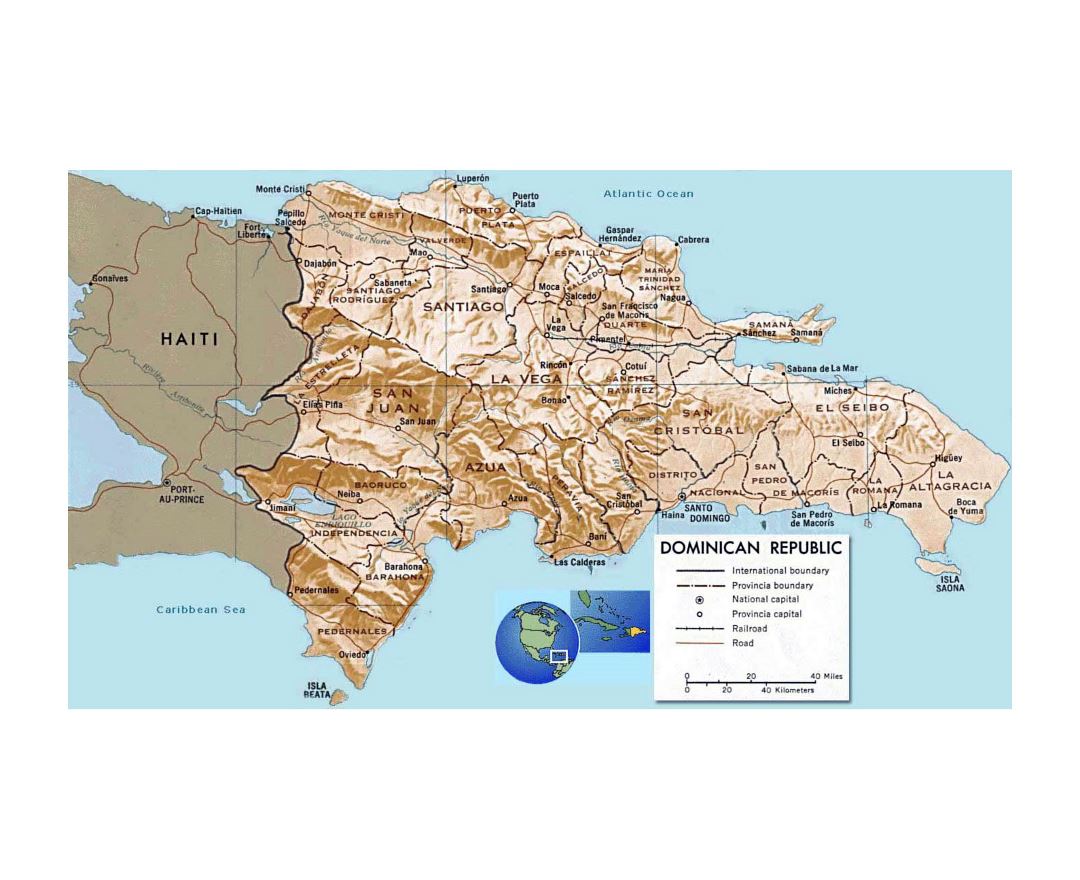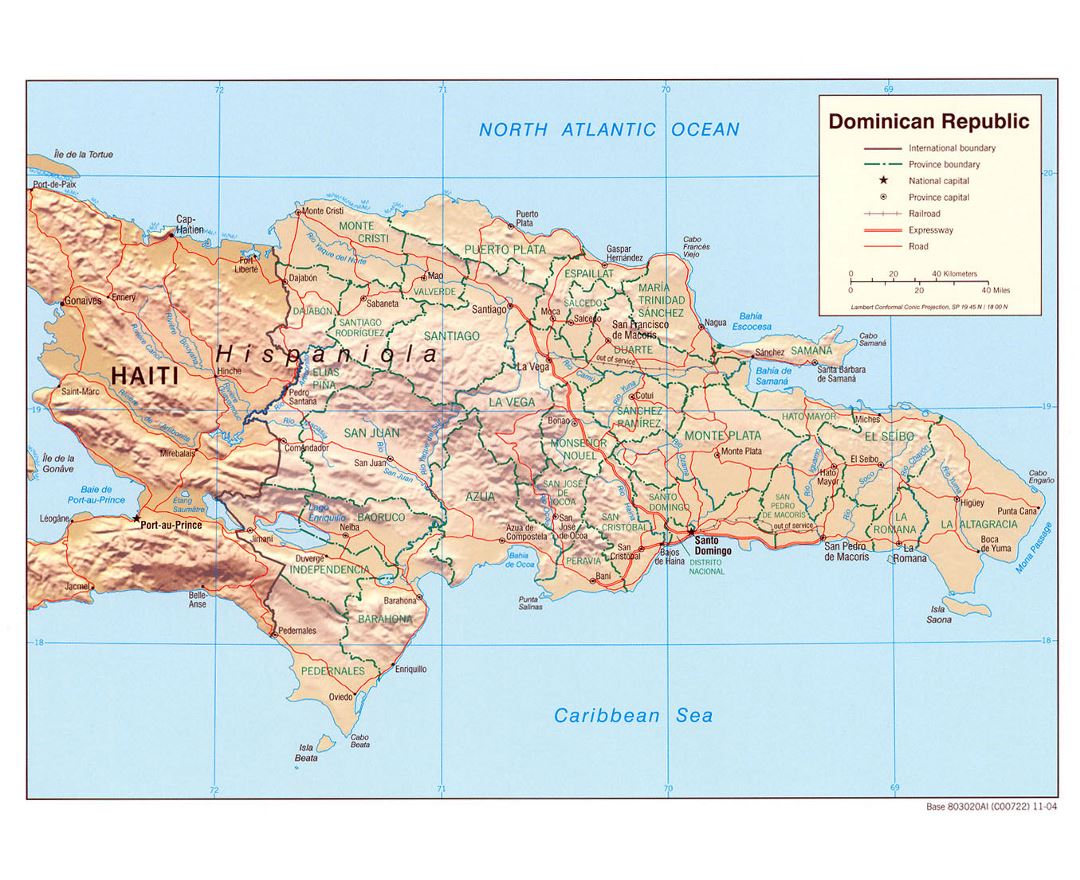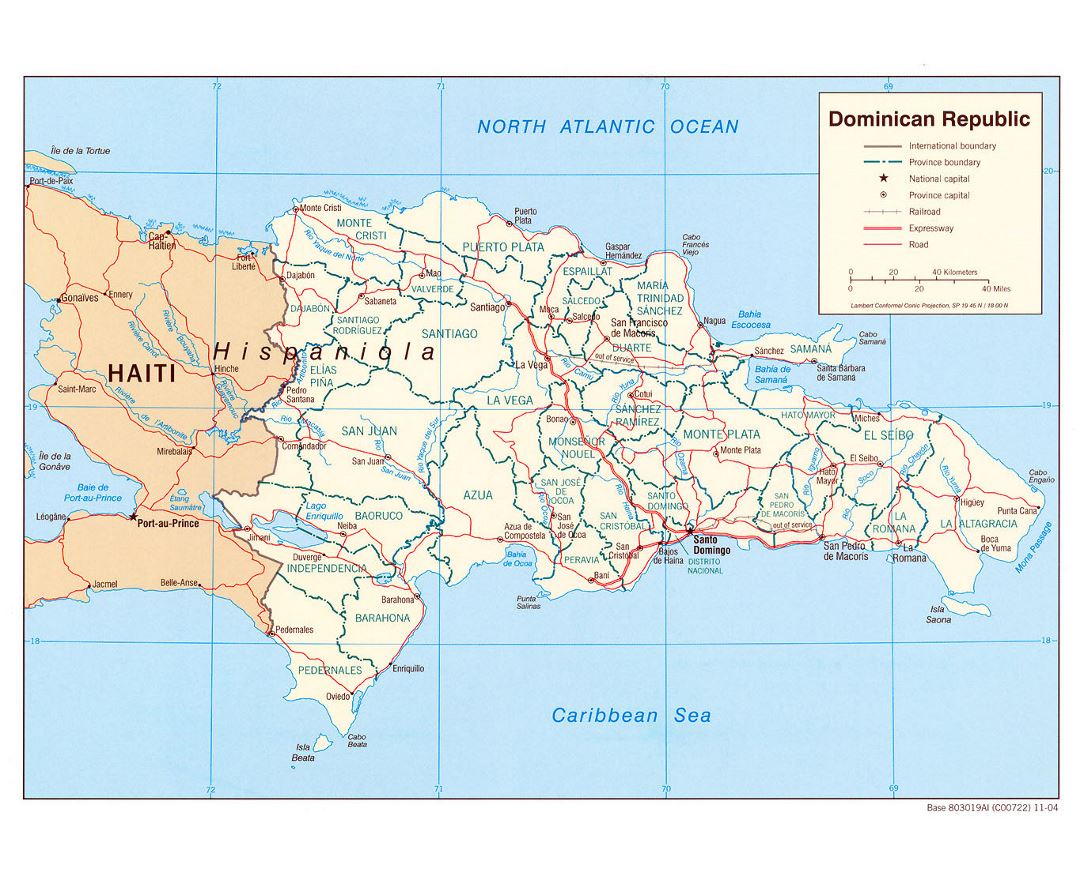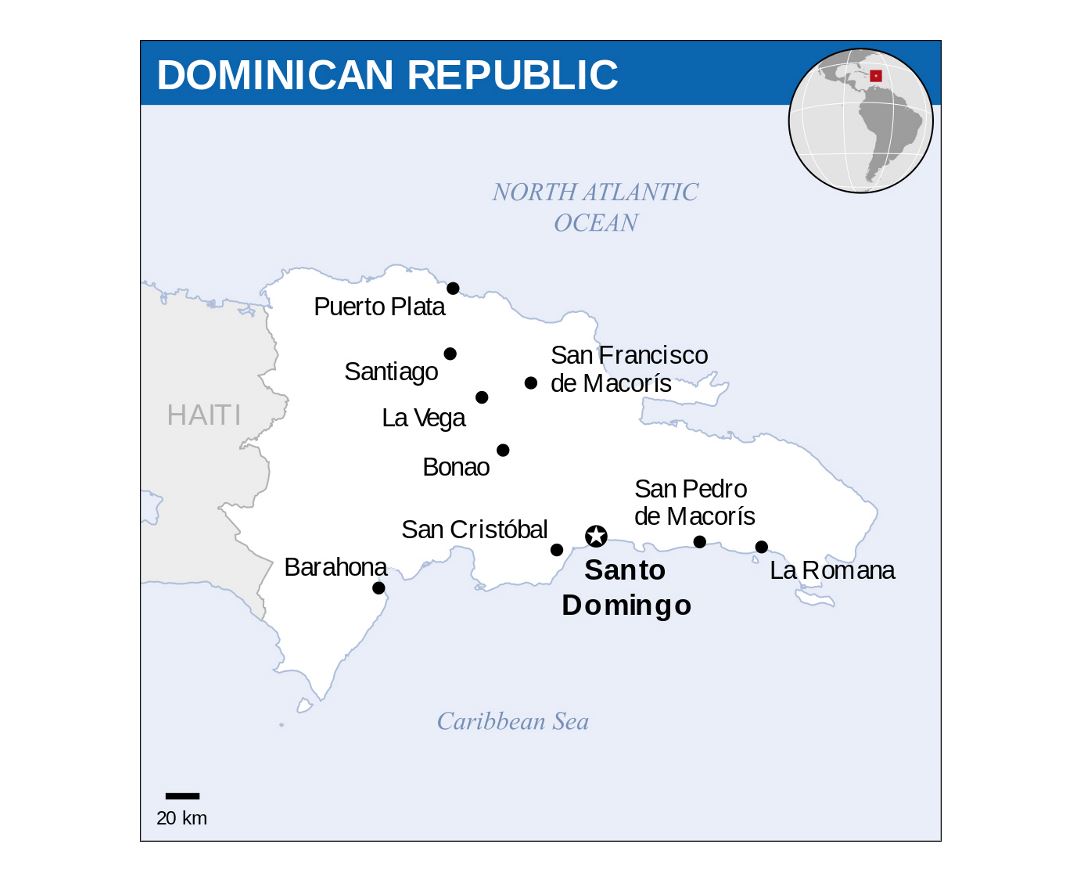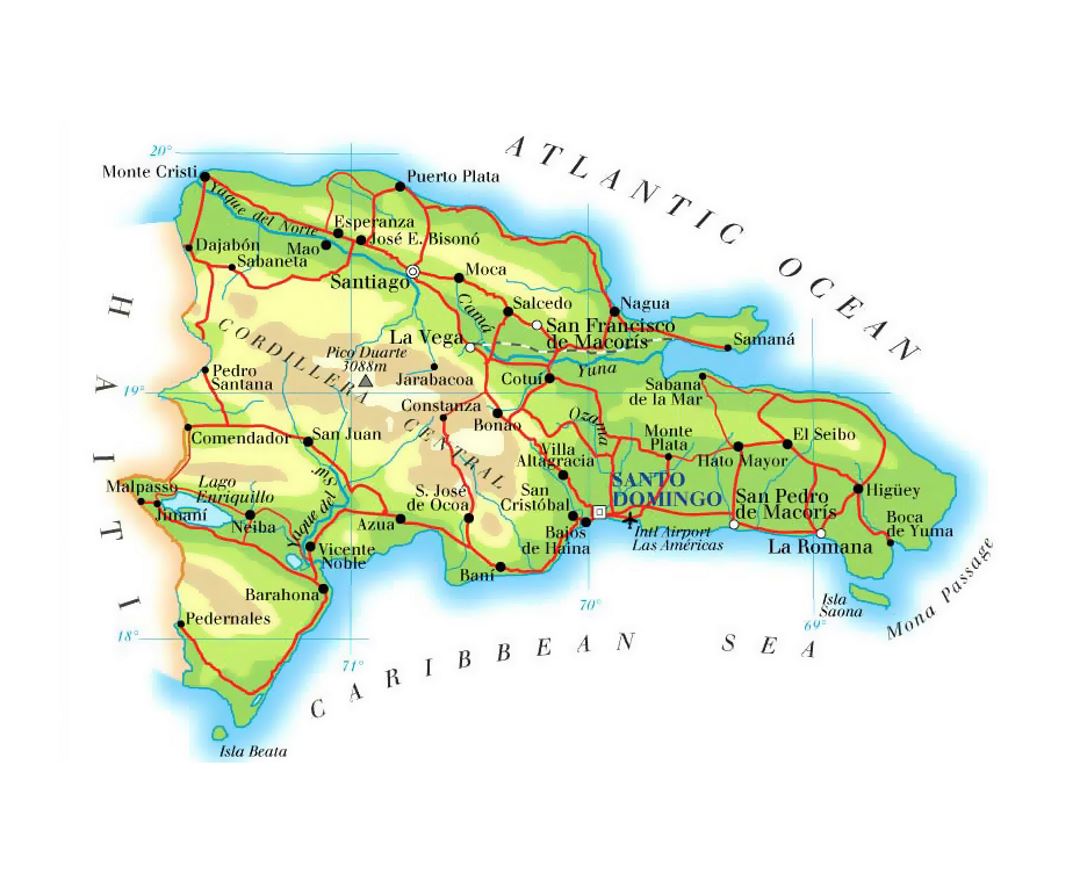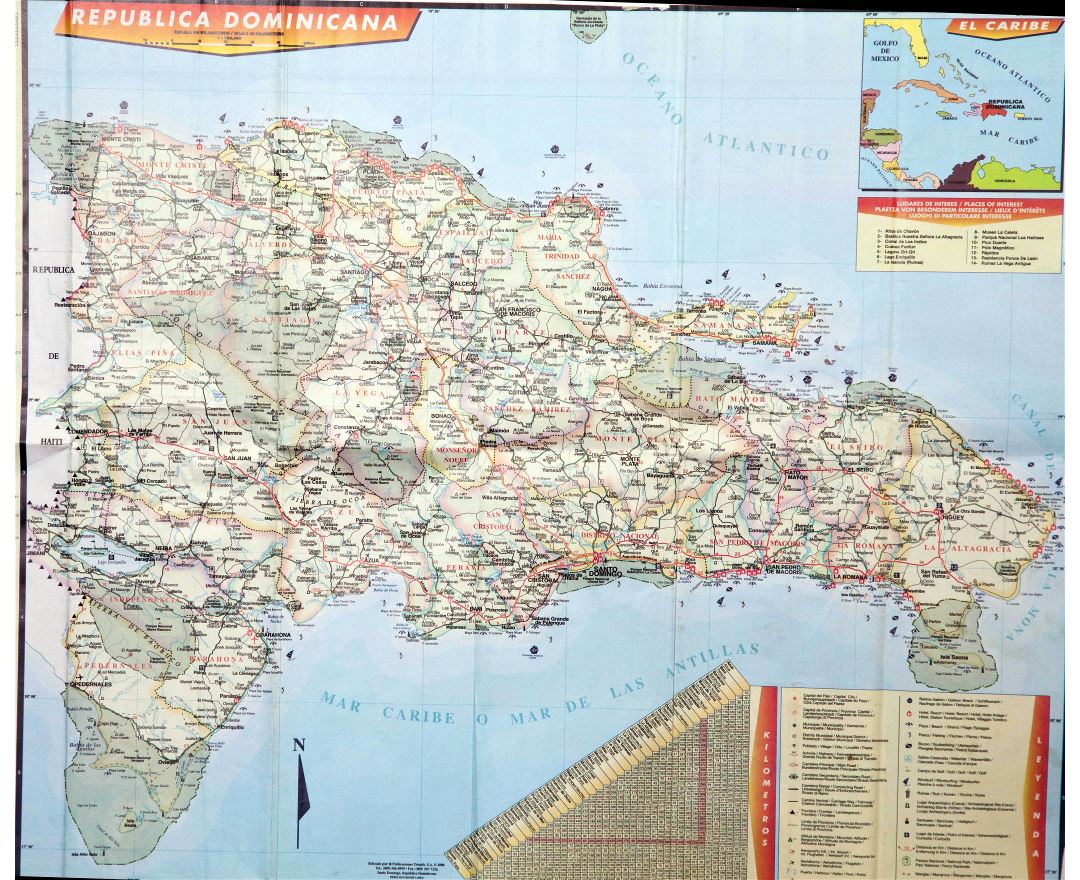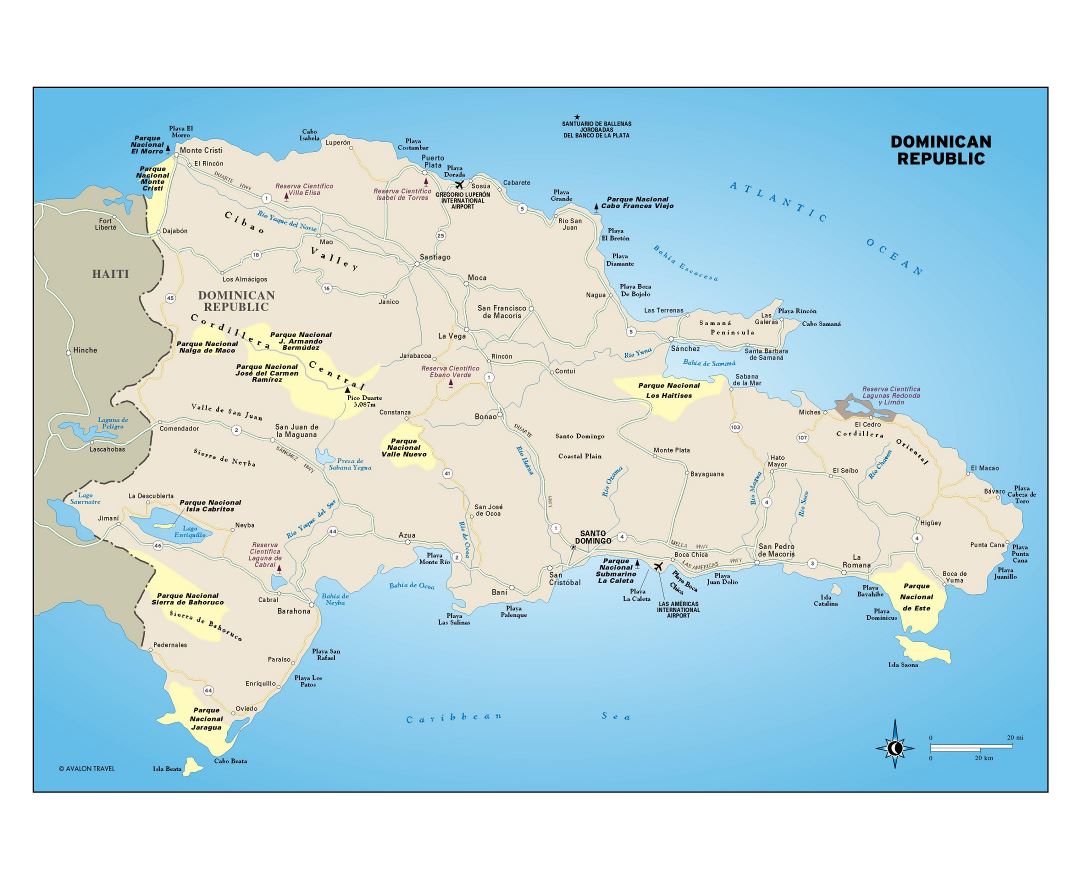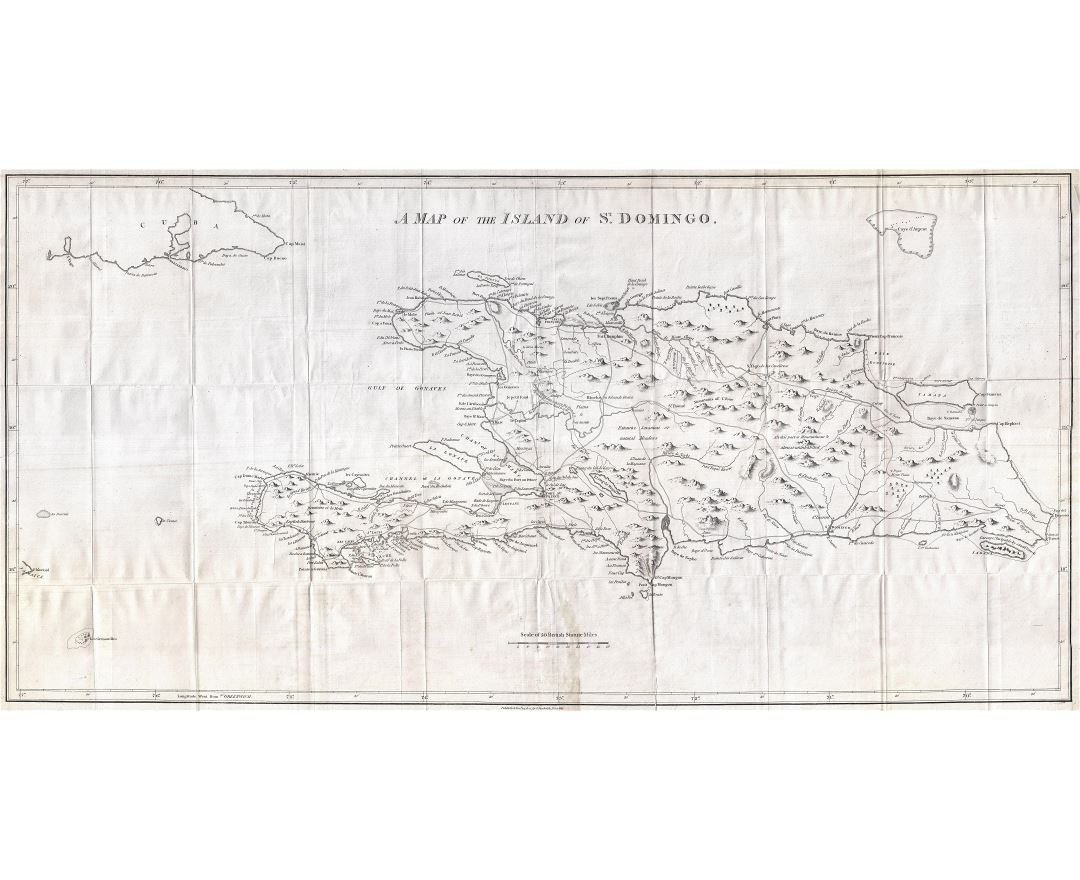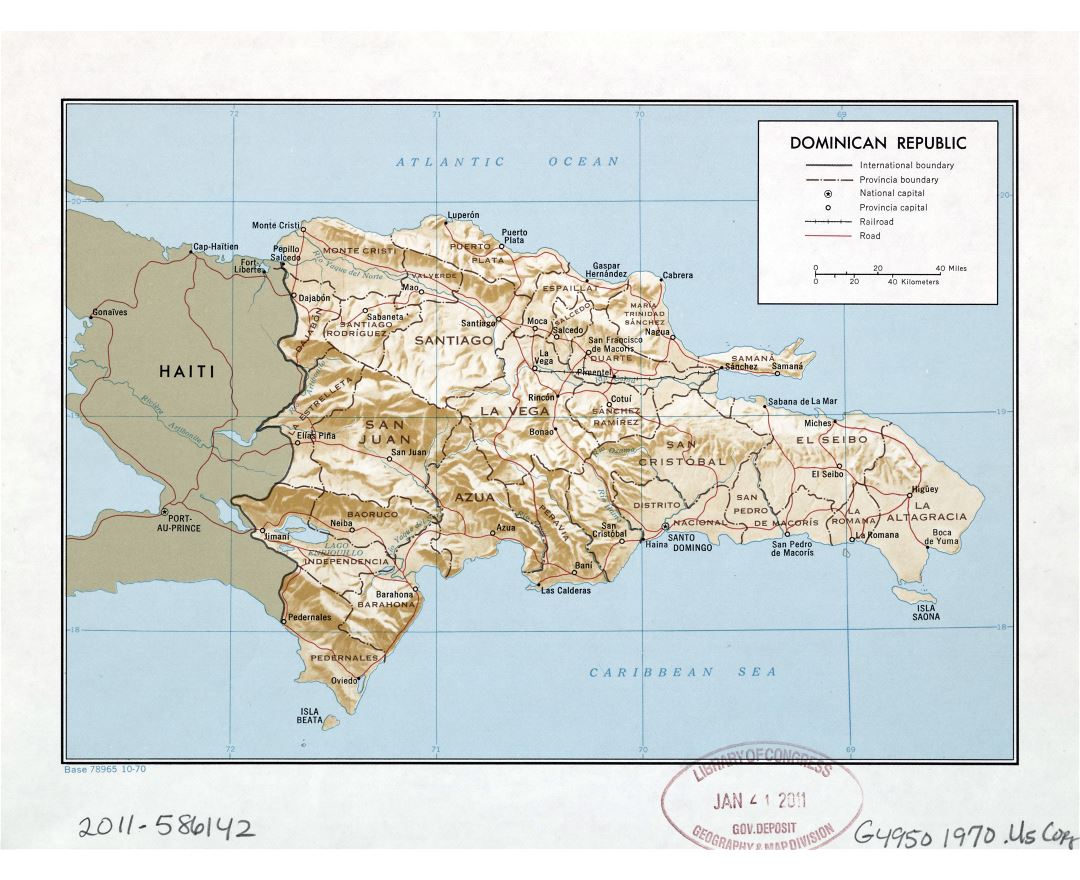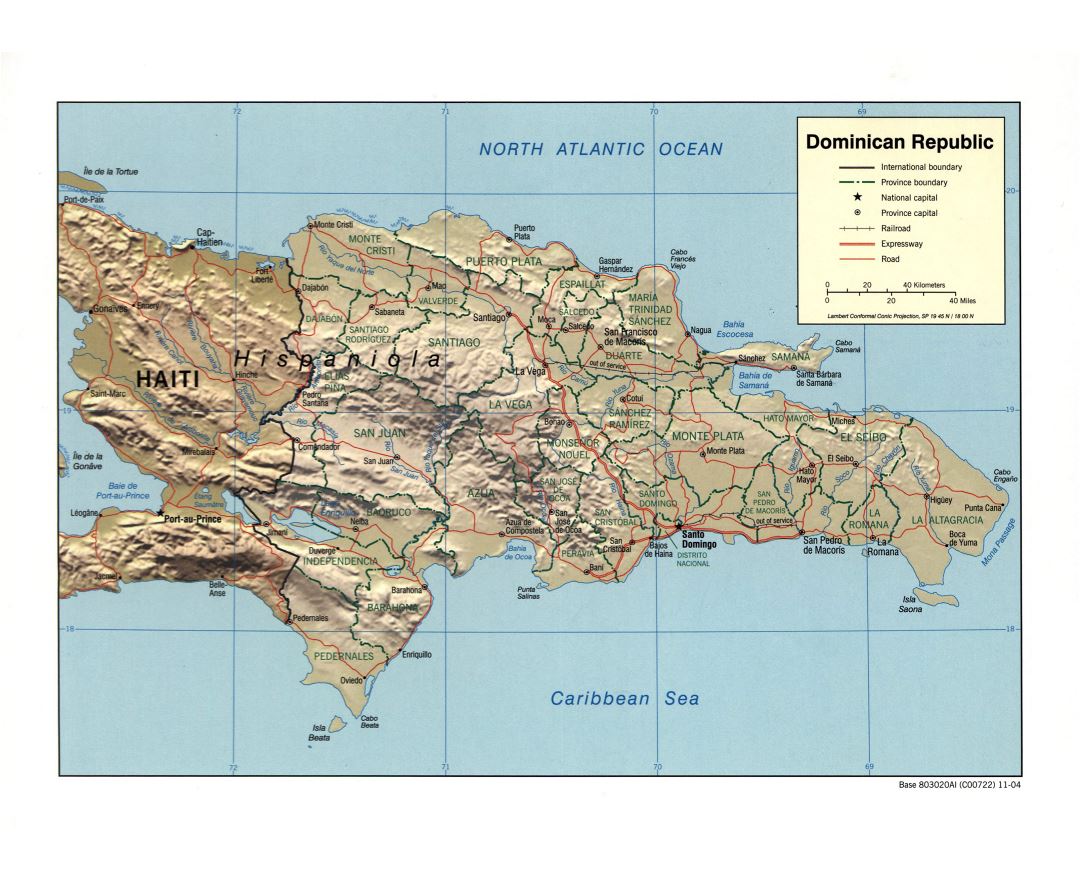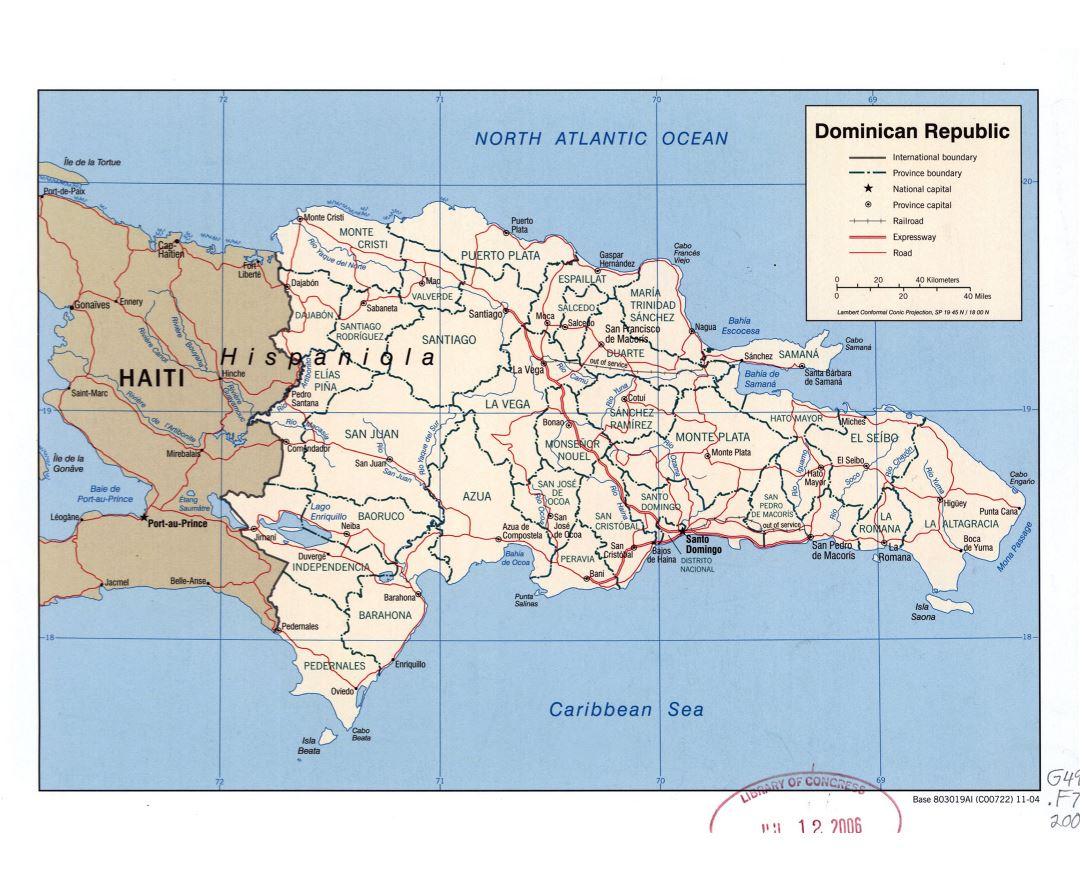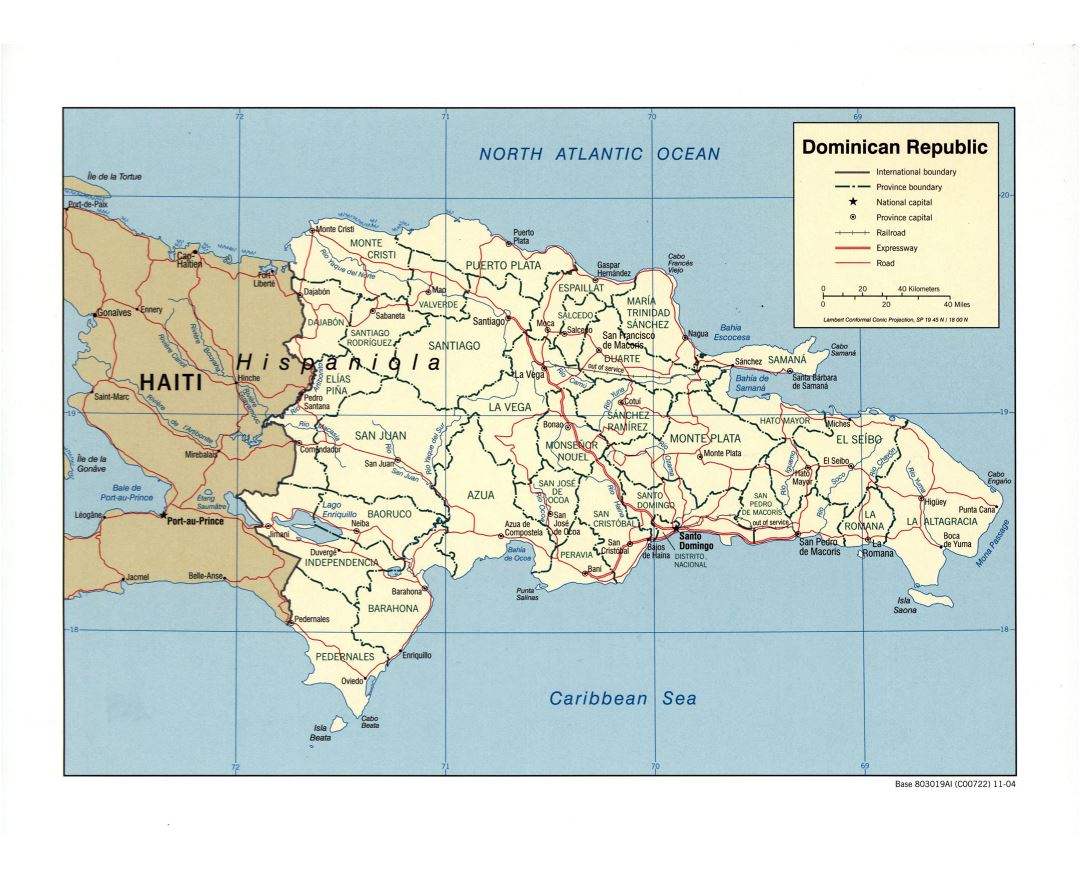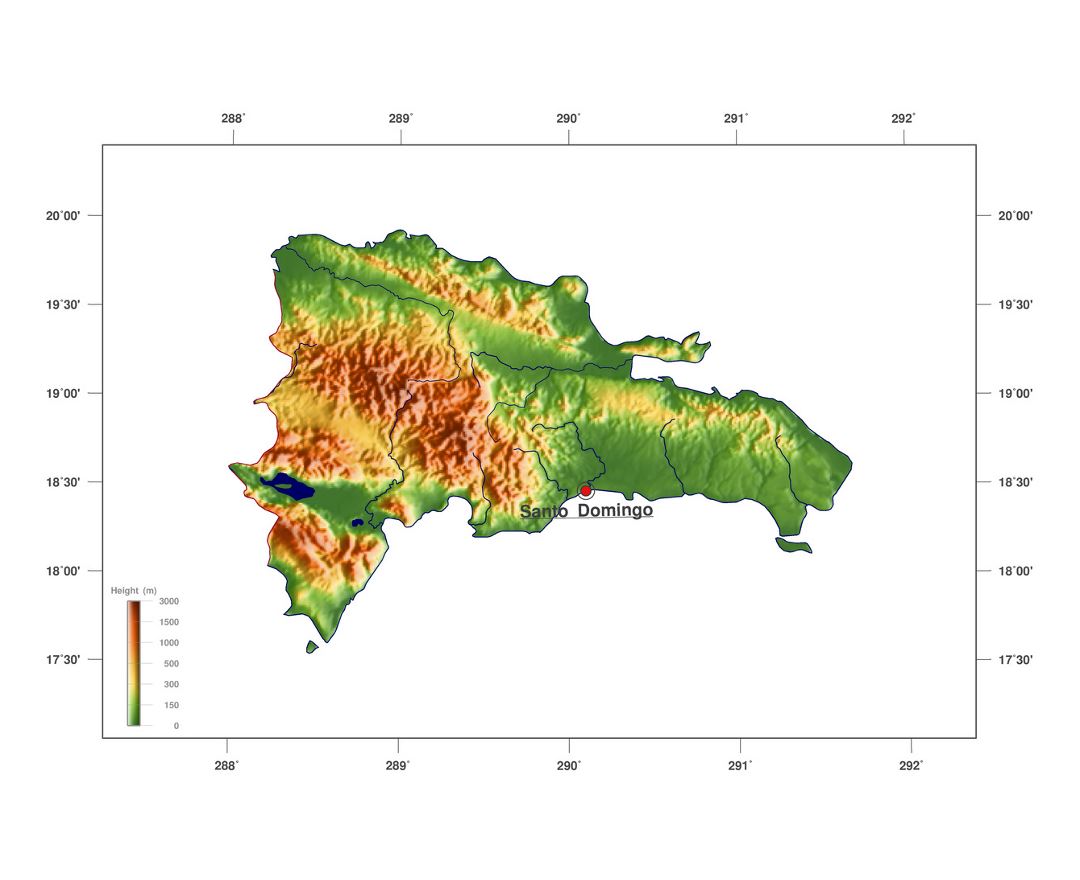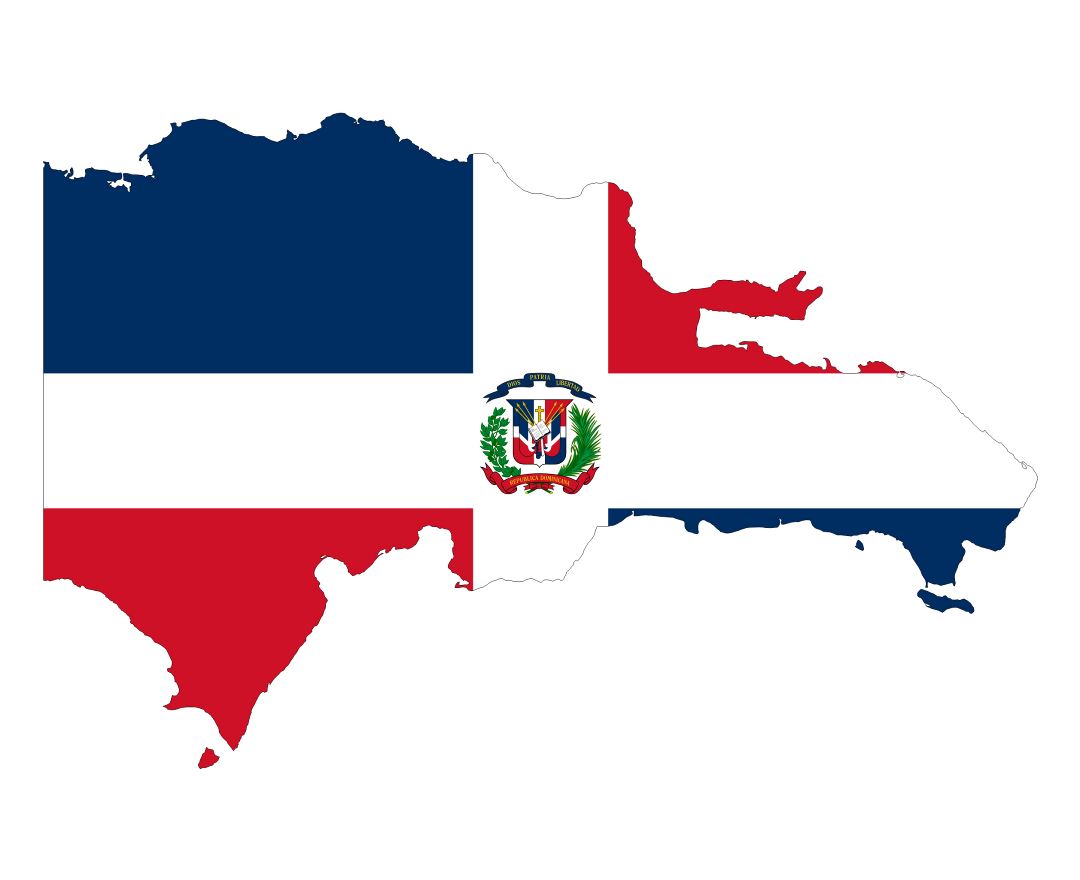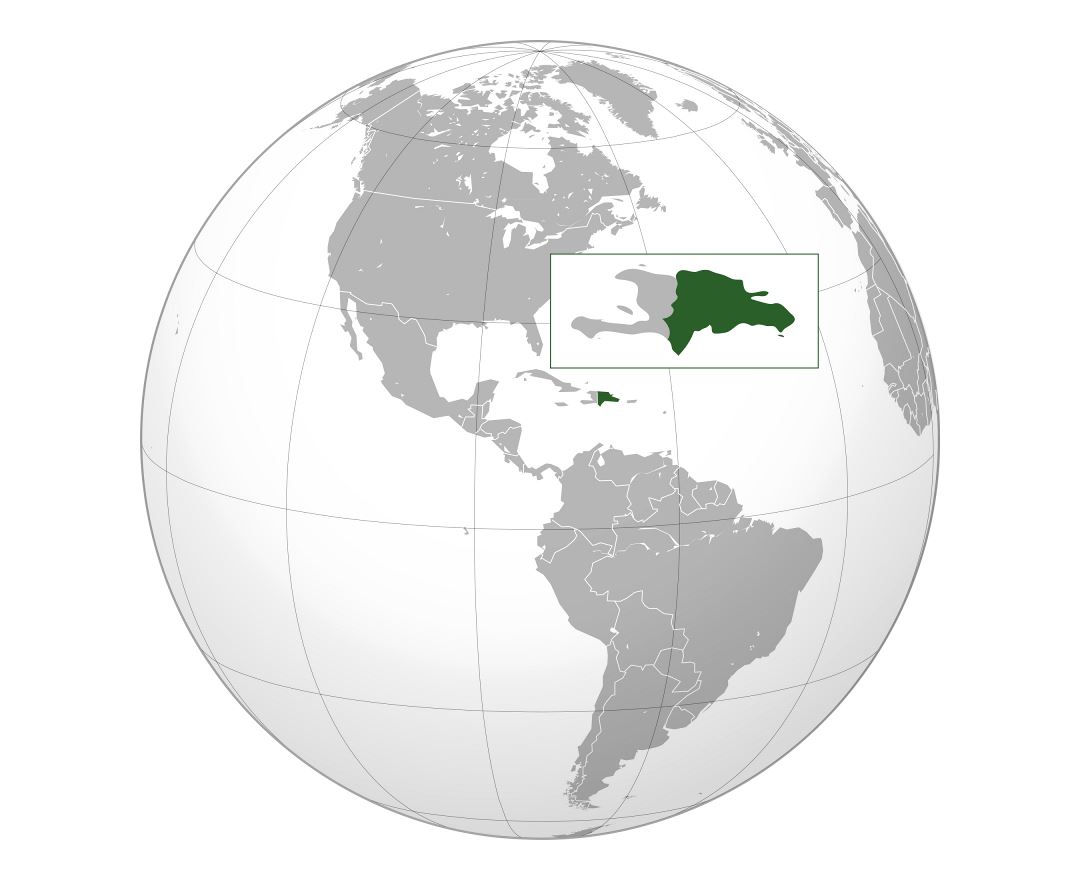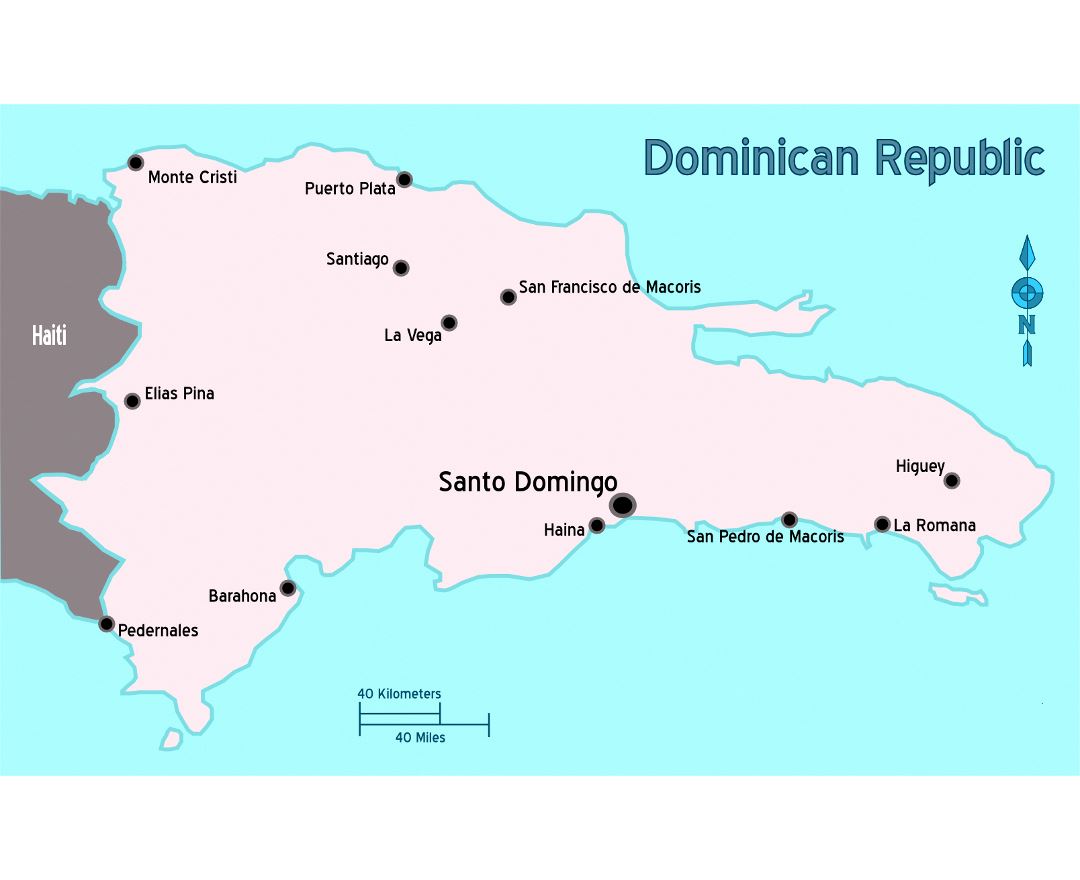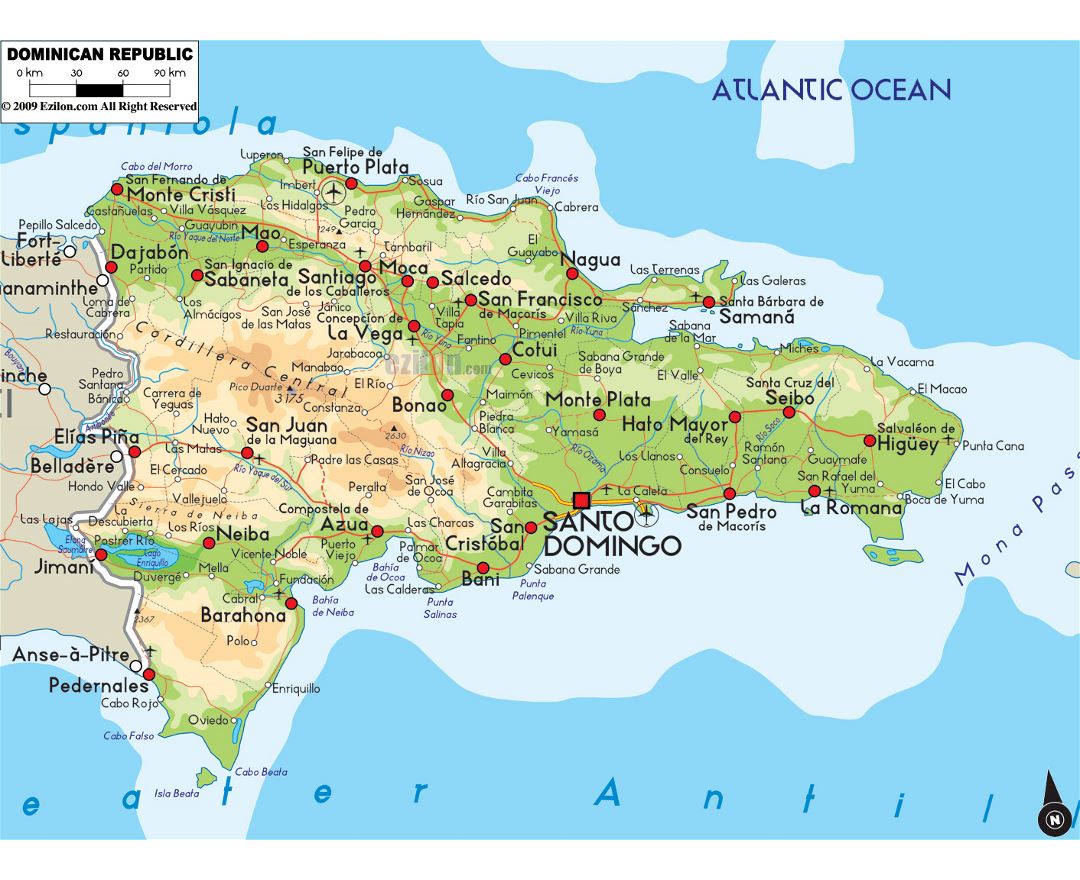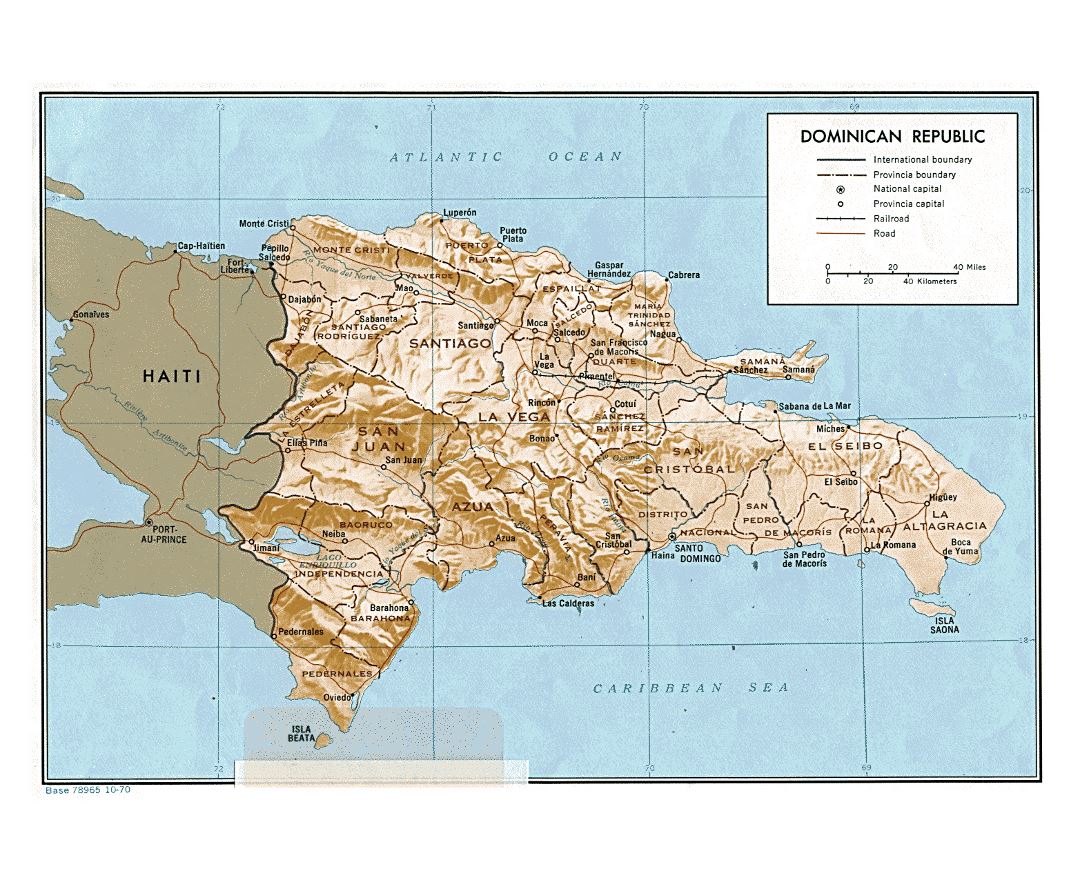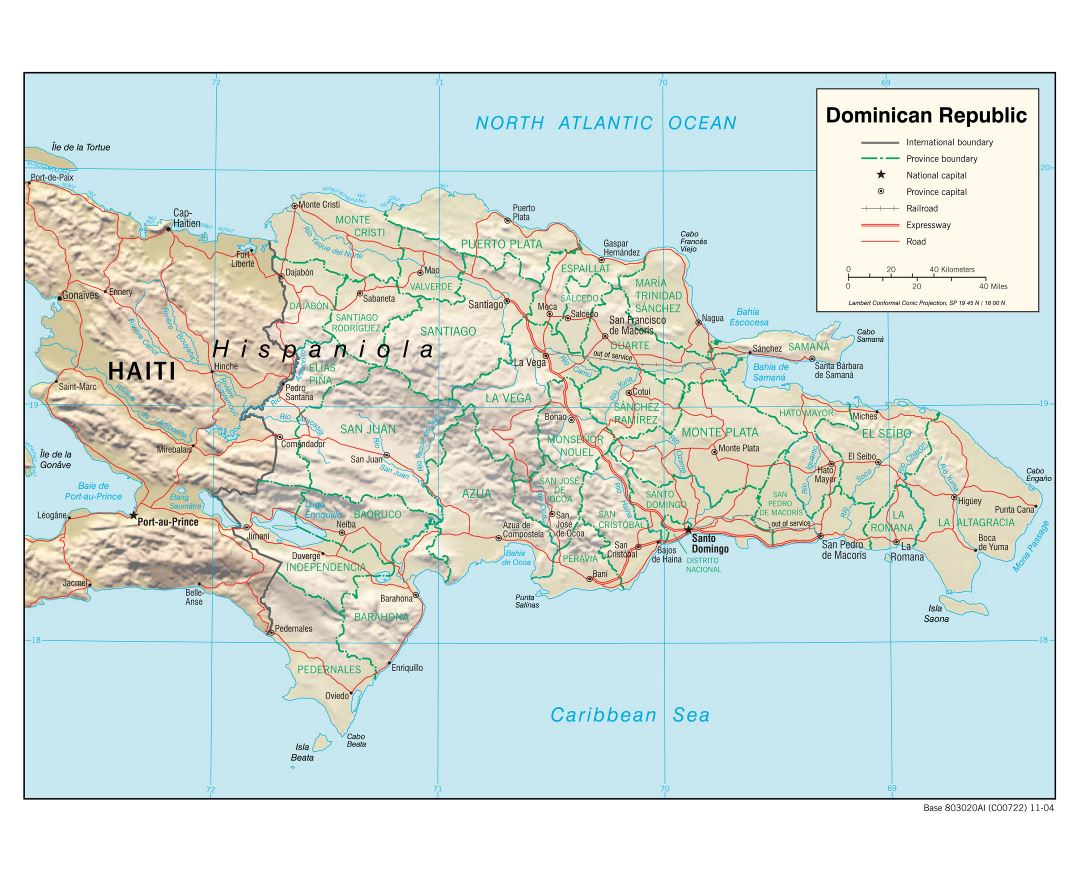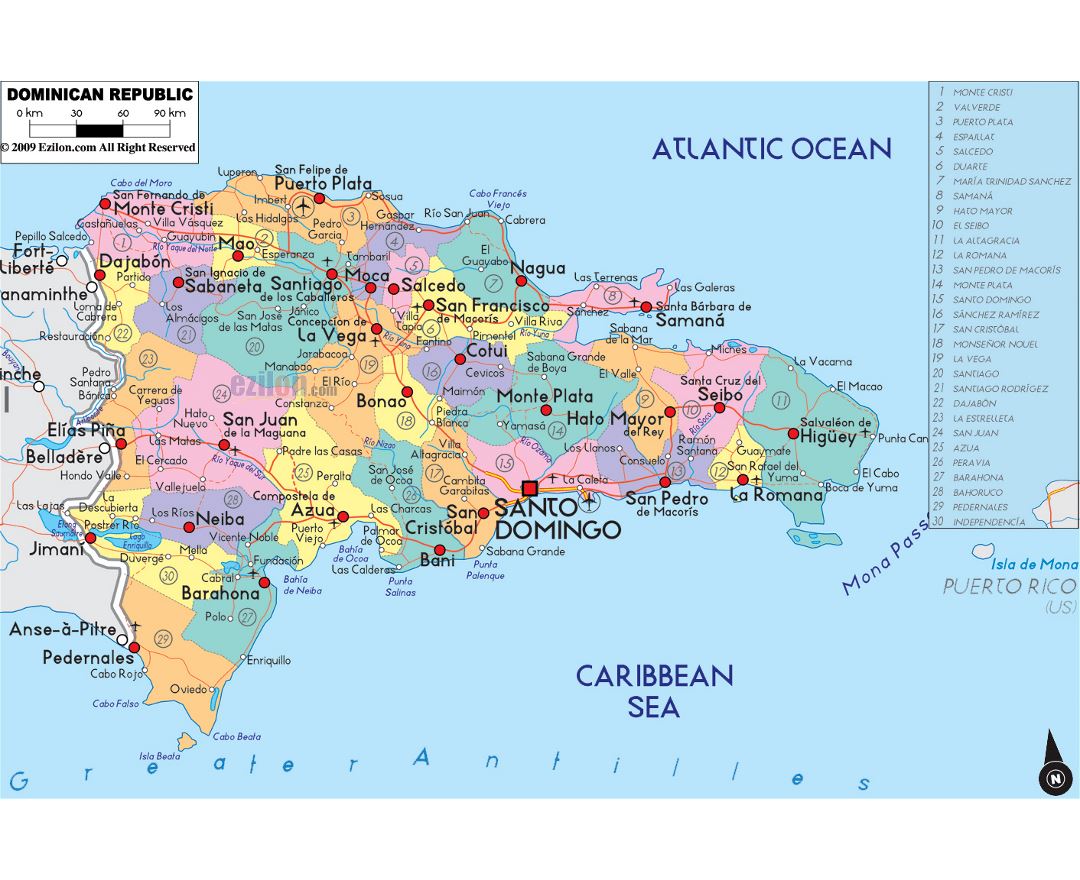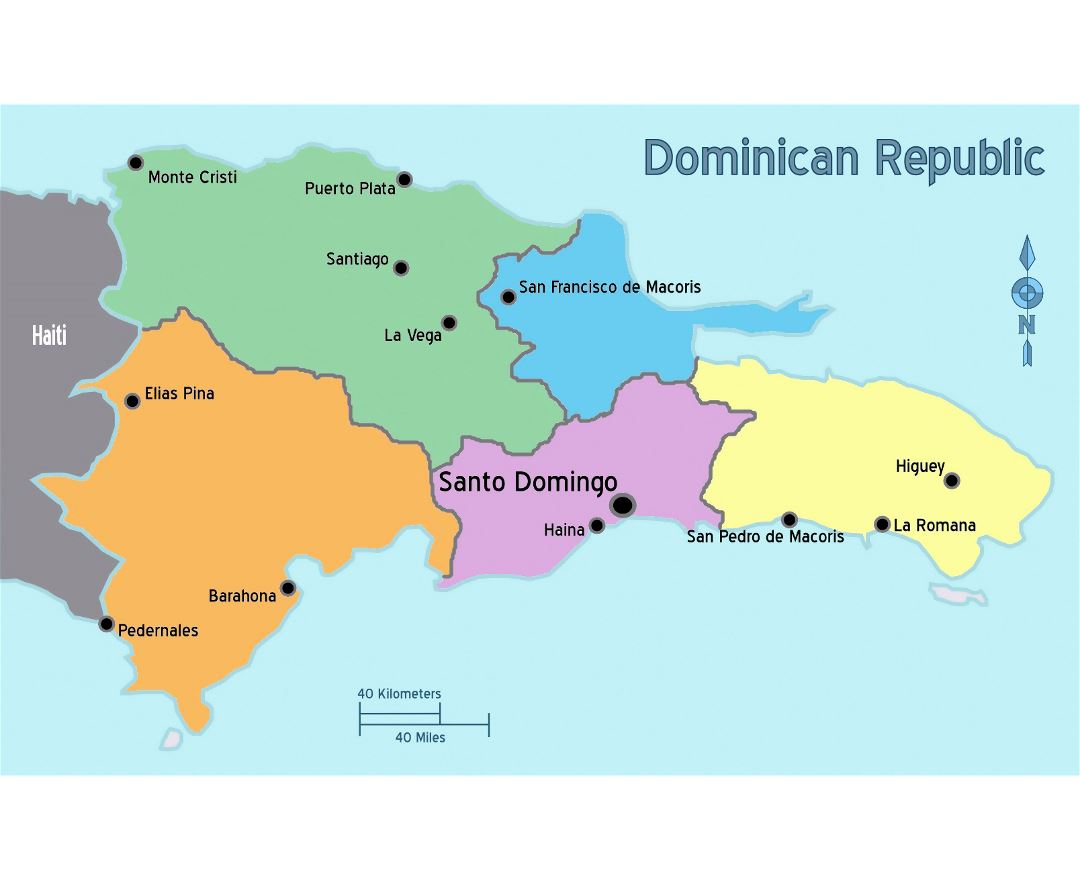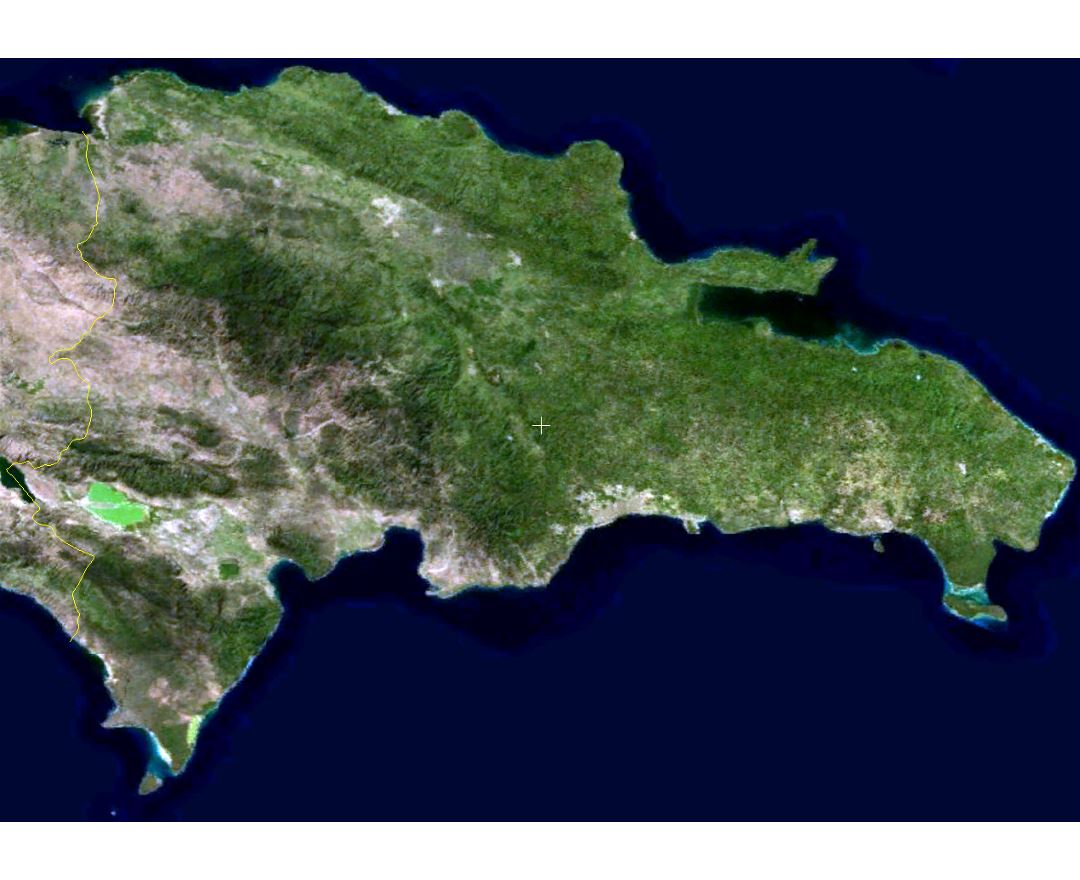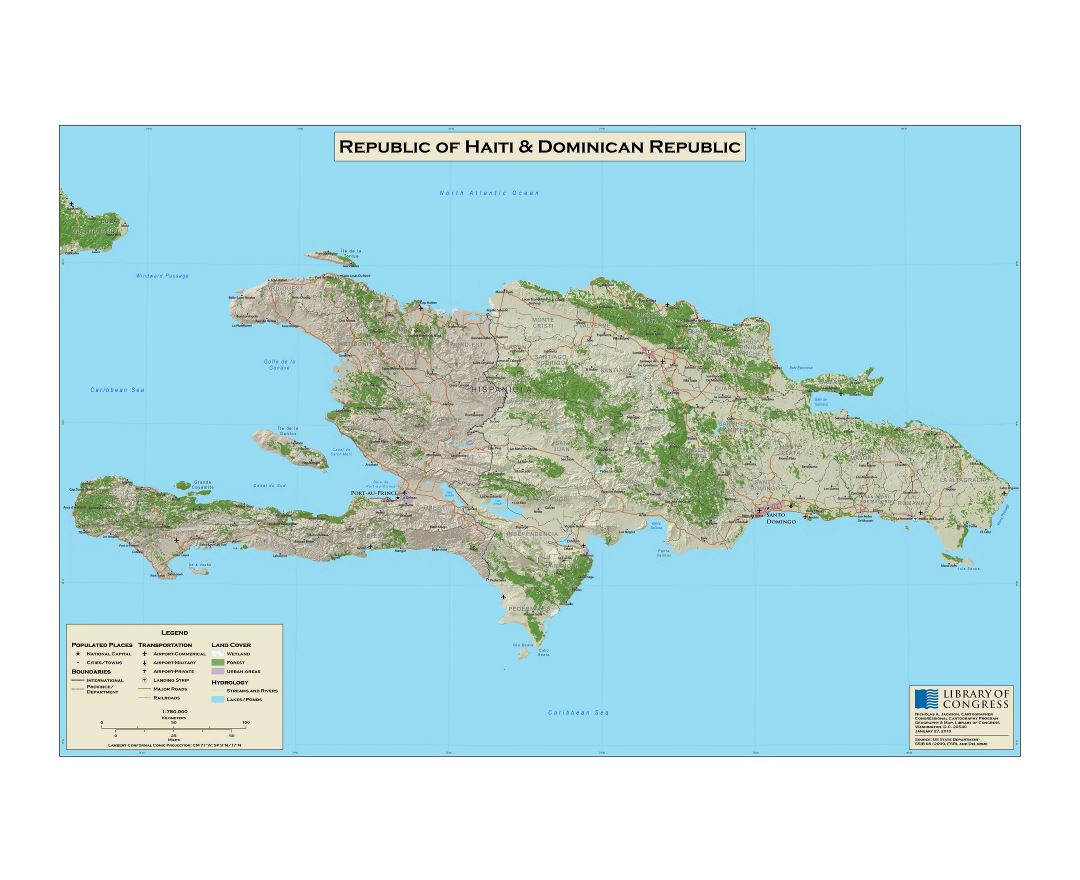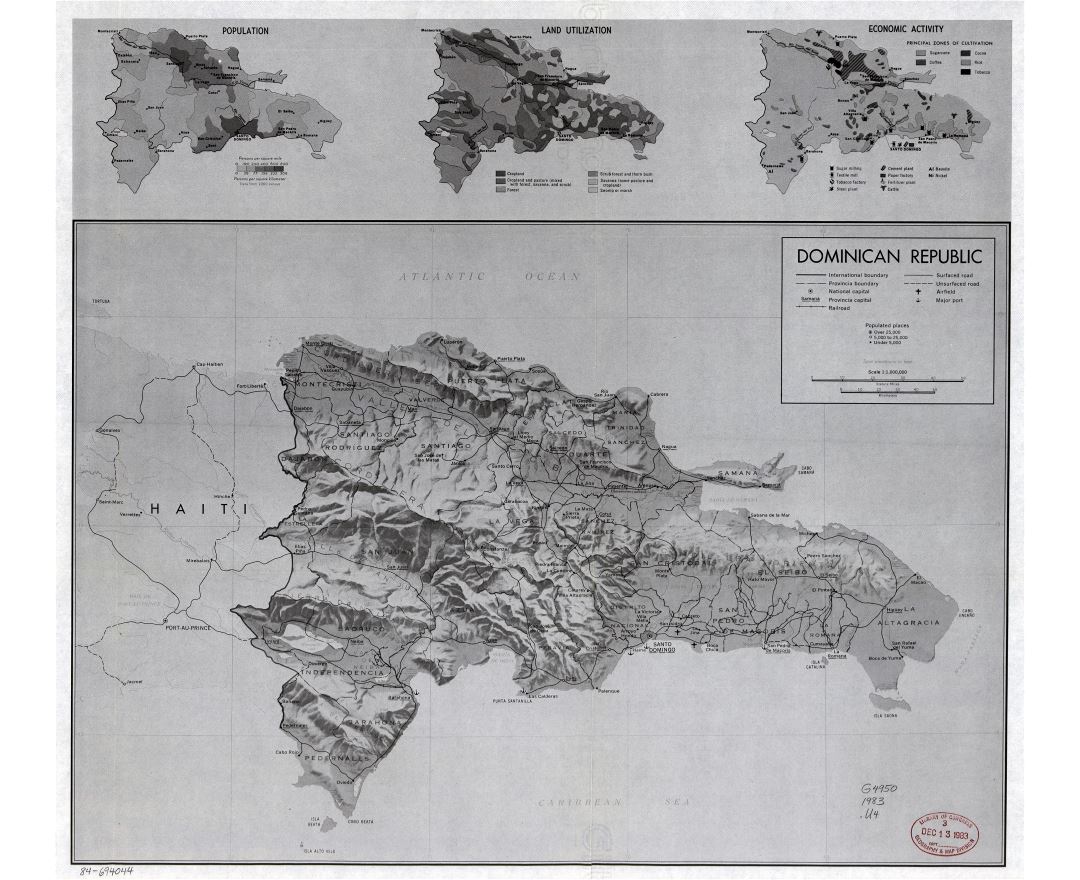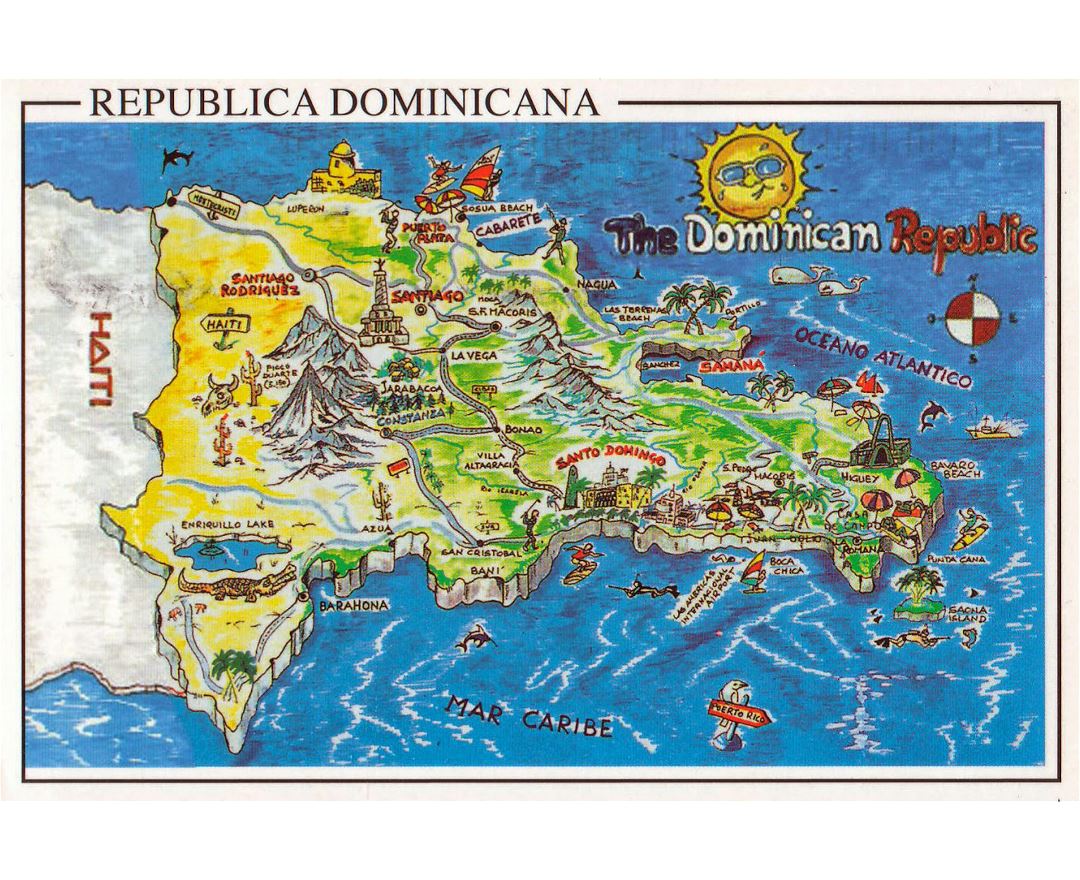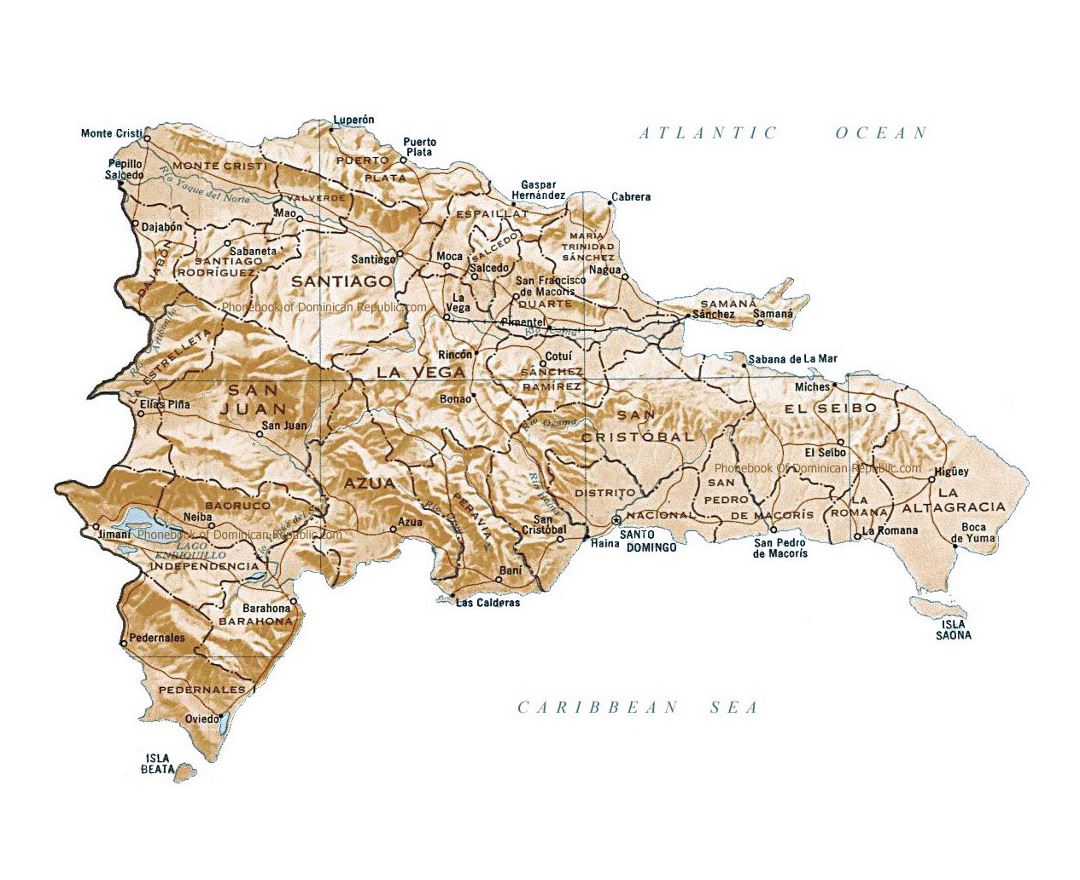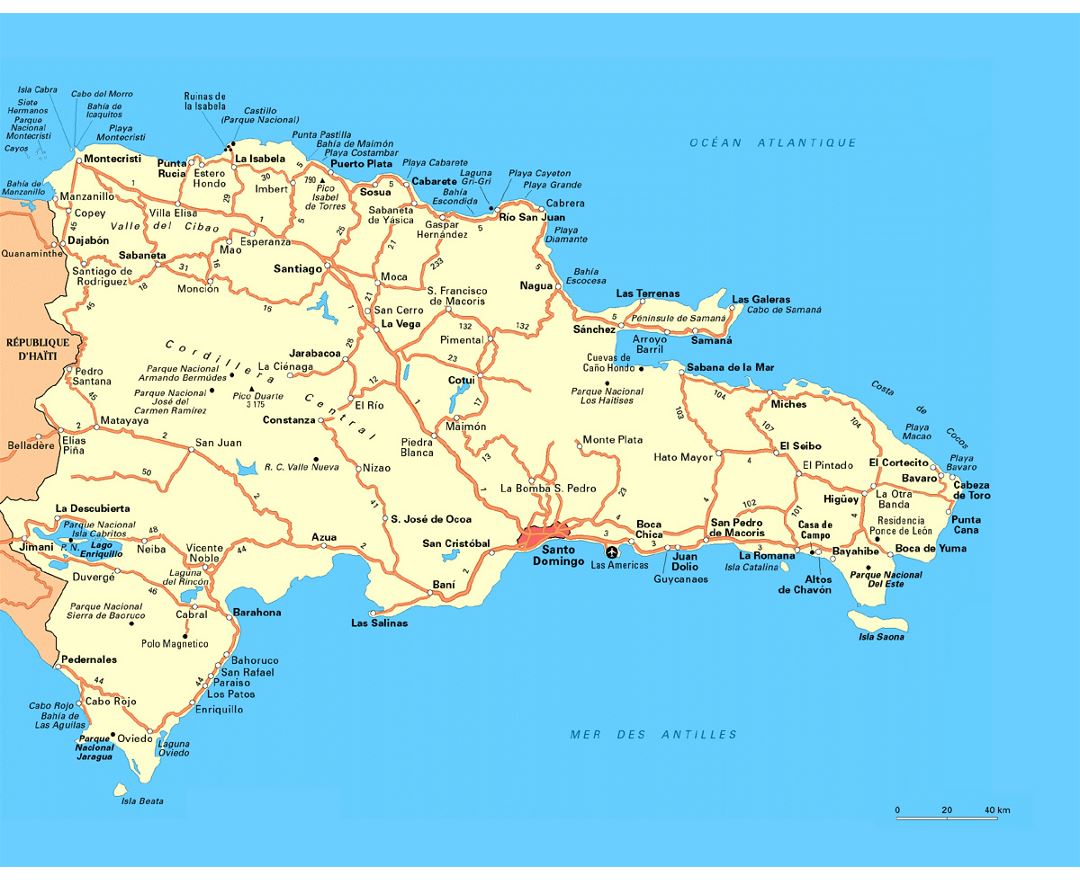Dominican Republic
The Dominican Republic is a sovereign state occupying the eastern five-eighths of the island of Hispaniola, in the Greater Antilles archipelago in the Caribbean region. The western three-eighths of the island is occupied by the nation of Haiti, making Hispaniola one of two Caribbean islands, along with Saint Martin, that are shared by two countries. The Dominican Republic is the second-largest Caribbean nation by area (after Cuba) at 48,445 square kilometers (18,705 sq mi), and third by population with approximately 10 million people, of which approximately three million live in the metropolitan area of Santo Domingo, the capital city.
Christopher Columbus landed on the Western part of Hispaniola, in what is now Haiti, on December 6, 1492. The island became the first seat of Spanish colonial rule in the New World. The Dominican people declared independence in November 1821 but were forcefully annexed by their more powerful neighbor Haiti in February 1822. After the 1844 victory in the Dominican War of Independence against Haitian rule the country fell again under Spanish colonial rule until the Dominican War of Restoration of 1865.
The Dominican Republic experienced mostly internal strife (Second Republic) until 1916. A United States occupation lasted eight years between 1916 and 1924, and a subsequent calm and prosperous six-year period under Horacio Vásquez Lajara was followed by the dictatorship of Rafael Leonidas Trujillo Molina until 1961. A civil war in 1965, the country's most recent, was ended by another U.S. military occupation and was followed by the authoritarian rule of Joaquín Balaguer from 1966 to 1978. Since then, the Dominican Republic has moved toward representative democracy and has been led by Leonel Fernández for most of the time since 1996. Danilo Medina, the Dominican Republic's current president, succeeded Fernandez in 2012, winning 51% of the electoral vote over his opponent, ex-president Hipólito Mejia.
The Dominican Republic has the ninth-largest economy in Latin America and is the largest economy in the Caribbean and Central American region. Though long known for agriculture and mining, the economy is now dominated by services. Over the last two decades, the Dominican Republic have been standing out as one of the fastest-growing economies in the Americas – with an average real GDP growth rate of 5.4% between 1992 and 2014. GDP growth in 2014 and 2015 reached 7.3 and 7.0%, respectively, the highest in the Western Hemisphere. In the first half of 2016 the Dominican economy grew 7.4% continuing its trend of rapid economic growth.
Recent growth has been driven by construction, manufacturing and tourism. Private consumption has been strong, as a result of low inflation (under 1% on average in 2015), job creation, as well as high level of remittances. The Dominican Republic has a stock market, Bolsa de Valores de la Republica Dominicana (BVRD). and advanced telecommunication system and transportation infrastructure. Nevertheless, government corruption, and inconsistent electric service remain major problems. The country also has "marked income inequality." International migration affects the Dominican Republic greatly, as it receives and sends large flows of migrants. Mass illegal Haitian immigration and the integration of Dominicans of Haitian descent are major issues. A large Dominican diaspora exists, mostly in the United States, contributes to development, sending billions of dollars to Dominican families in remittances.
The Dominican Republic is the most visited destination in the Caribbean. The year-round golf courses are major attractions. A geographically diverse nation, the Dominican Republic is home to both the Caribbean's tallest mountain peak, Pico Duarte, and the Caribbean's largest lake and point of lowest elevation, Lake Enriquillo. The island has an average temperature of 26 °C (78.8 °F) and great climatic and biological diversity. The country is also the site of the first cathedral, castle, monastery, and fortress built in the Americas, located in Santo Domingo's Colonial Zone, a World Heritage Site. Music and sport are of great importance in the Dominican culture, with Merengue and Bachata as the national dance and music, and baseball as the favorite sport.



